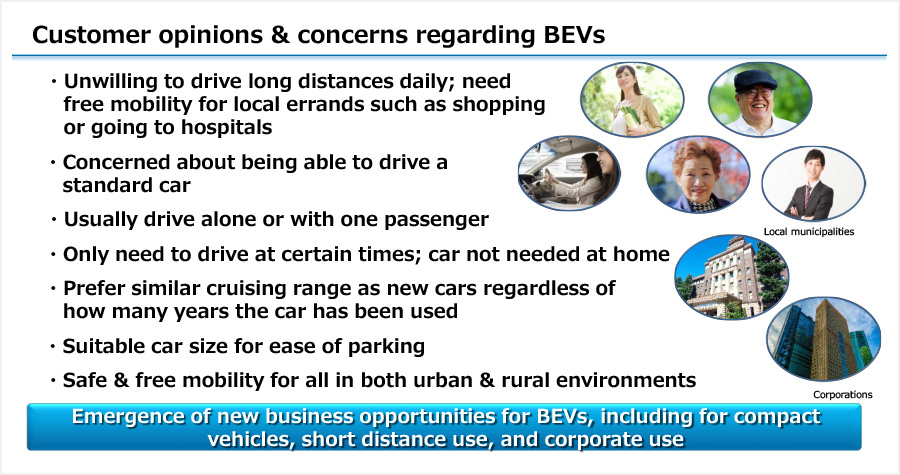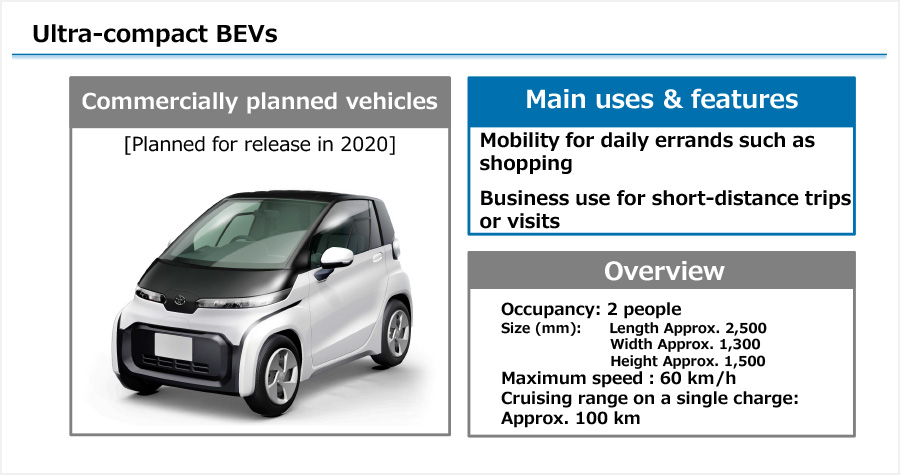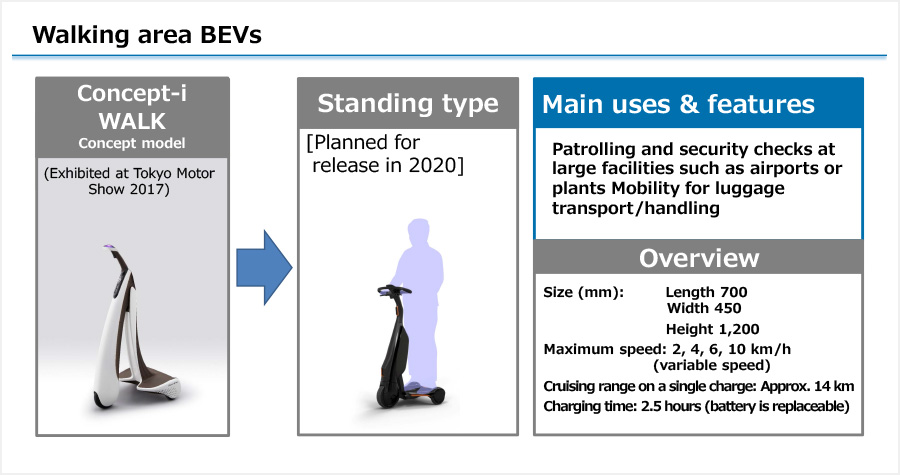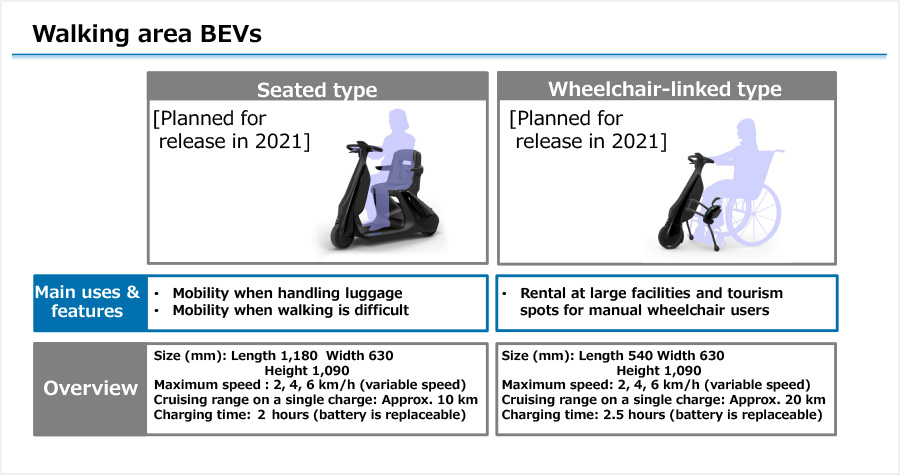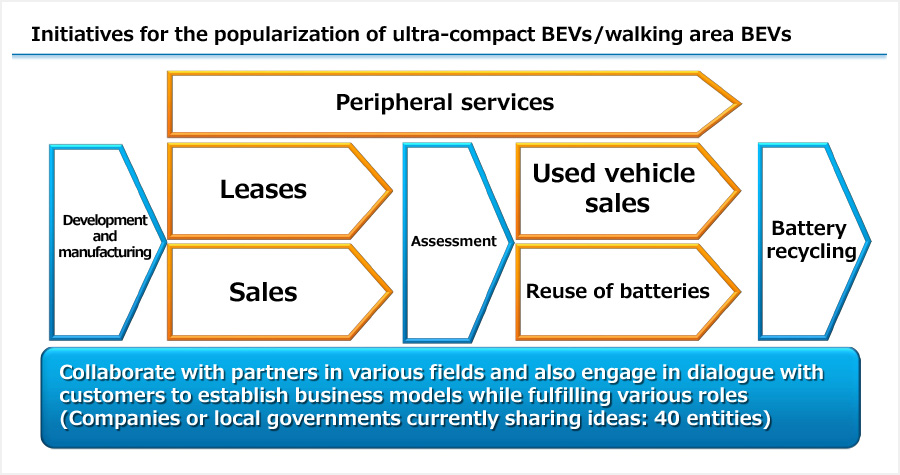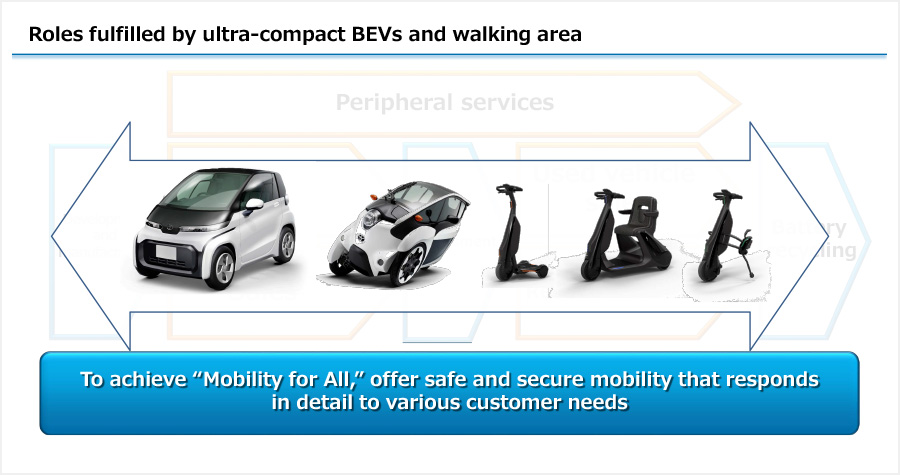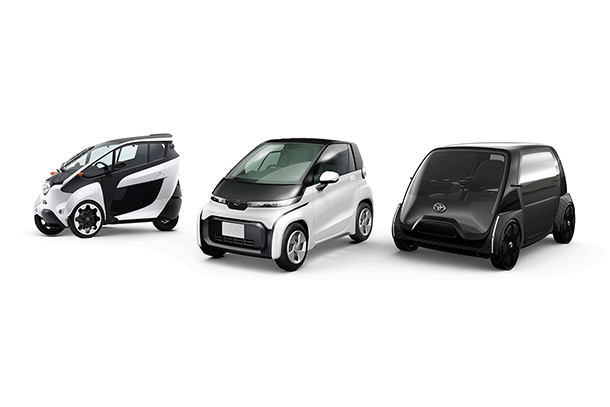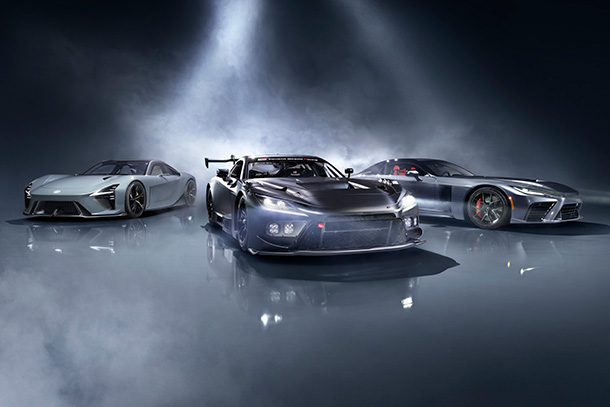Jun. 07, 2019
1) To popularize BEVsDeploy ultra-compact BEVs in Japan
In its planning for a BEV business in Japan, Toyota is gathering the opinions of its customers.
It has received diverse requests from different customers.
These include, for example, requests from young people who have just acquired a driver's license, requests from elderly people who need a daily means of getting around, requests from companies that need mobility for visiting their customers and making rounds, and requests from local governments of urban, mountainous, and other areas that want to secure modes of mobility that are safe, that offer freedom, that are kind to the environment, and that conform to their localities.
Toyota believes that there are new business opportunities for comparatively compact BEVs that are for short-distance use.
To respond to such calls, these are the BEVs that Toyota is currently developing.
First, there is a BEV that Toyota calls an "ultra-compact BEV" and that is smaller than vehicles in Japan's minivehicle category.
The i-RIDE concept model on the left was unveiled at the Tokyo Motor Show in 2017.
Currently, Toyota is developing toward commercialization a BEV of the class shown in the center.
It is also advancing the consideration of a business concept model as seen on the right.
Toyota plans to launch its ultra-compact BEV in 2020.
Because it is easy to maneuver, Toyota imagines it supporting the daily mobility of newly licensed drivers and of the elderly, and, for businesses, Toyota imagines it being used as an environment-friendly vehicle for daily short-distance rounds and customer visits.
It seats two people and is smaller than a minivehicle, and Toyota is targeting a cruising distance of approximately 100 km on a single charge.
This is the three-wheeled BEV known as the "i-ROAD".
It is smaller than Toyota's planned ultra-compact BEV and is about the size of a motorcycle.
For some time now, Toyota has been conducting verification trials on public roads under the assumption that it will be used in sharing services in urban areas and at tourist destinations.
Toyota has also been long developing BEVs that can be used in areas in which people usually walk to get around.
On the left is the i WALK concept model exhibited at the Tokyo Motor Show in 2017.
Since that motor show, Toyota has been conducting verification trials that have involved members of the general public actually using the i WALK as a means of moving to and from events around Toyota's Mega Web facility in Tokyo's Odaiba area, as well as verification trials centered on security patrols at Chubu Centrair International Airport and at Narita International Airport, among other activities.
Toyota is advancing preparations for a possible commercial launch of the i WALK in 2020.
Toyota is also considering other variations of its pedestrian-zone BEVs.
On the left is a sit-while-riding type, which Toyota envisions for use when a person has much to carry, when a person has difficulty walking for sustained periods, or when a person has walking impairments.
On the right is a wheelchair-linked type, which can be attached to a manual wheelchair as a power source.
For the use of the BEVs that it is developing, Toyota is preparing a business model that covers elements from development and sales all the way to disposal.
For each of the areas that this initiative involves, Toyota has already been seeking partners who will work with it to promote its BEV business, and it is discussing details with several companies.
Toyota is also advancing direct dialogue with the businesses and local governments that will become its customers regarding the kind of performance and functions that would be good for its potential products to have.
Toyota is sharing its aspirations with its future partners and customers, and, so far, a total of approximately 40 companies and local governments have joined Toyota at the discussion table.
Under its planned BEV business model, Toyota intends to offer a BEV lineup that will provide safe and secure mobility that matches the lifestyle of each and every person, from people who can drive conventional vehicles to the elderly, including those who have turned in their driver's license, and people who use wheelchairs.
Toyota wants to pay close attention to the needs of local communities and of its customers so that it can offer face-to-face and heartful assistance that supports the way people live.
